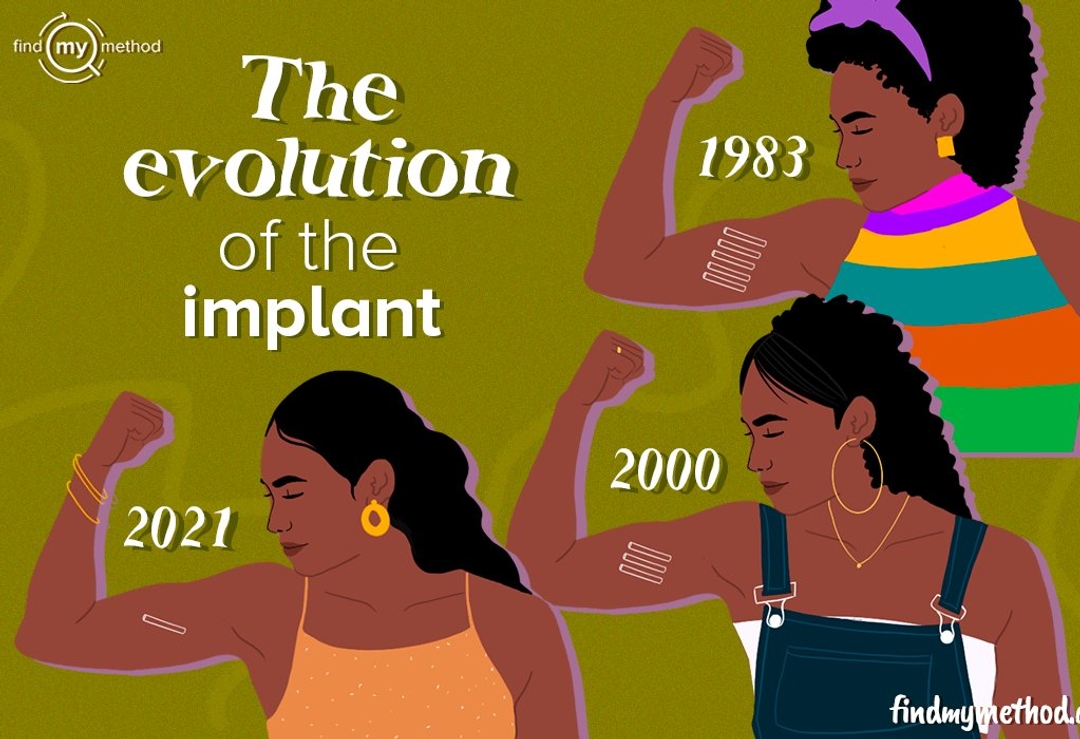I remember my college days like they were yesterday. Finally feeling like I was coming into my own, my college years were filled with exploration and wonder, especially when it came to my sexuality. But I remember also being equally worried about my birth control option. I struggle to stay on track with making sure I finish an antibiotic regimen, let alone a consistent pill that has to be taken at the same time, so the birth control as a contraceptive to be fair, made me a bit uneasy.
So you can imagine my delight when I learnt about the implant. The team of Planned Parenthood had come to my campus and having had never heard of some of the long term options, I was very intrigued by the many options presented to me, and after some much needed research, I had the implant inserted. And honestly—easy breezy smooth sailing for me from then on. But I have become increasingly aware that this has not been the way in which implants have been like in the past. This contraceptive option has a long history behind its current makeup today. So let’s take a trip down memory lane to understand how far this wonderful contraceptive option has come from.
1. In 1983, the first hormonal implant, Norplant, was released by a Finnish pharmaceutical company. Although this is the first year it was released to the market, the idea of using silicon capsules to slowly release levonorgestrel, the synthetic hormone found in many birth control options, had been researched from the year 1966 [1]. The initial implant was not the typical one or two rod option we know today but instead consisted of 6 rods being inserted. That’s right—6 whole rods were inserted into your arm as a contraceptive option, and one can only imagine the issues this could have caused. The idea was revolutionary but there were many complaints—many women suffered from adverse effects and providers struggled with the insertion and the removal of the implant, so in 2002, the option was discontinued [2].
2. There is a history of coercion in the story of the implant. When selected by an individual who has had access to all the information, the contraceptive implant can be one of the best options for many women, but this has not always been the case. When Norplant was initially made, there were numerous incentivized programs that sought to decrease the population size of certain demographics and the contraceptive implant was either forced onto women, such as those who had a criminal record, or provided to them with very little information—such as those from black and brown communities [3]. This is the case with many contraceptive options and this short history lesson would not be complete without mention of it.
3. The backlash faced from Norplant forced scientists to improve the method. Given that many women had issues and there was still quite a high incidence of pregnancy even after insertion, the Population Council, originators of the 6-rod implant, improved upon their methodology and then came up with the 2 rod implant that is now known as Jadelle and the Implanon. Initially, the insertion of these options required a cumbersome machine that was not accessible to everyone, but not too long after their release, the inventors created a disposable plastic insertion device that would help ensure the implant was available for everyone. After this, the range in implant options increased with Sinoplant and Levoplant joining the available brands . DKT WomanCare, the providers of Levoplant, also engage in a lot of work to educate populations about their contraceptive options, which is important given that this option is largely available in places in the global south, such as Southern Africa. By educating people about their options, we take a step in the right direction to not only address the physical harm that may have occurred in getting to this stage with the implant, but also the societal and cultural biases that if furthered, could harm many women in communities that are already underprivileged.
We have definitely come a long way when it comes to contraceptive options generally, but also when it comes to the implant. Simply put, I am not certain I would have been as willing to get the contraceptive implant if it meant having six capsules inserted inside of me! But lucky for us, options such as Levoplant are now readily available and in many instances can be found at a subsidized cost. DKT WomanCare has been taking part in a #LoveMyLevo campaign that has meant numerous providers have been trained on inserting the Levoplant. The campaign also includes an educational component, so we can all learn more about the implant as an option. To learn more about this campaign, visit them here.
References:
- A History: the Progestin Implant. Reproductive Health Access Project. Accessed September 2021. https://www.reproductiveaccess.org/2013/01/a-history-the-progestin-implant/
- Implantable Contraception. Welfare of Women- Global Health Programme. Accessed September 2021. https://www.glowm.com/section-view/heading/Implantable%20Contraception/item/398#.YUiGixMza3I
- Voluntarily, for the Good of Society: Norplant, Coercive Policy, and Reproductive Justice. Berkeley Public Policy Journal. Accessed September 2021. https://bppj.berkeley.edu/2018/08/23/norplant-coercive-policy-and-reproductive-justice/
About the author: Marie-Simone Kadurira is a Reproductive Health consultant in Southern Africa. She is also the founder of Vasikana Vedu. It is a non for profit organization which combats period poverty in the region.


